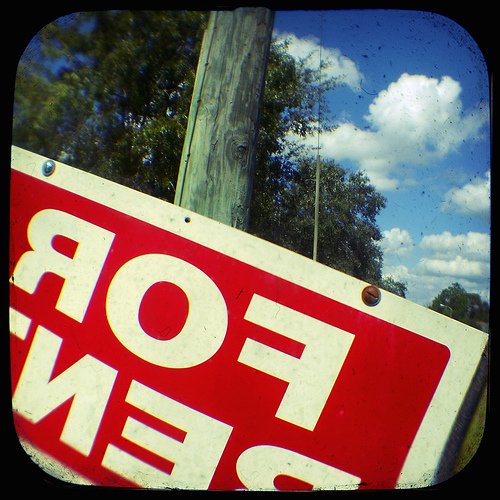The year was 1997 and the country was on the brink of civil war.
Just under two years prior, several “investment” firms had appeared offering a very enticing opportunity: Invest a sum of money and in 90 days receive three times the amount. People could smell that something wasn’t right but they felt drawn to the easy profit nevertheless. So they started investing small amounts: $100 at first that became $300 in three months time. And the word started to spread as more and more people decided to dip their toes in cautiously (at first).
Then came the rise. Emboldened by the capital that kept coming, many of the firms started making public investments, sponsoring sports teams and the arts, and in one occasion even became an official sponsor of Formula 1. By now the phenomenon had gone national. Only a few “stubborn skeptics” remained out of the “investment of the century” and they were under constant pressure from friends and family members to join in. For a brief six month period, a poor, previously communist country experienced what it was like to live in an affluent society. Everyone had money, jobs were plentiful and the good times had smiled upon us again.
The missing piece from that story is that while euforia overcame common sense, people’s comfort zone had expanded to the point that many were selling their homes and investing their life savings in these companies. Of course, none of it was real. The companies tried to reduce the amounts they paid out per quarter at first to 15% and finally to 8% but there were simply no people left to feed the pyramid. It was all a facade – all of it. Even the large and public investments were simply a show to lend credibility to a pure and simple Ponzi scheme.
Unlike most Ponzi schemes that typically unravel after 6 months, Albania’s pyramid firms lasted 18 months fueled by large across the board participation as well as large sums of laundered illicit money.
When it was all said and done, widespread devastation drove the country to the brink of civil war.
I told you that extreme story from my teenage years to make this, more understated but equally crucial point.
Every asset class has its own “normal” level of performance in relation to the quality of the asset. Well diversified blue chip stocks usually rise 6-8% over the long term with heavy cyclical volatility in between. High quality real estate investments usually offer cap rates of 5.0-8.5% depending on the asset in addition to conservative long term appreciation of 4-5%. Add to that the fact that debt is being paid off using rents and owners of real estate enjoy exclusive tax benefits not available to investors in other asset classes.
Now, there are times when “the elements” come together just right and real estate investors are able to obtain higher cap rates, appreciation and debt paydown than normal. This usually happens at the bottom of a recession, after a correction in values, when the economy is in distress and interest rates are low. That’s what happened between 2008-2012.
If you had the courage to overcome the negative mood of the country and the widespread fear that the world was going to hell in a handbasket by next Thursday, you could purchase high quality real estate investments with 20-25% down, borrowing money at rates as ridiculous as 3.75% and enjoying cash on cash yields of 15-20%. But let’s be clear about one thing. The principal reason why courageous investors were able to get those type of returns was because of risk. Values were depressed because most people were fearful – they were staying away from the market, in squirrel mode stashing away as much cash as possible to last them through the impending Apocalypse. Now that we know how the movie turned out, their risk taking was vindicated. But let’s not forget that instead of the path of Houston, your market could have also taken the path of Detroit, too. And the risk would have cleaned out most investors under that scenario.
Now, all is well in our world (as for the rest of the world, that’s another matter). The fear is gone and hey, look at all this money we stashed away. Time to put it to work. So demand rises as do rents and eventually prices. And before you know it, returns are back to their “normal” levels as a reflection of greatly reduced risk. But now, we might miss those double digit returns to the point that we doubt the strength of current investments.
Just like we will wish we had invested back when rates were under 5% for investment properties when rates will rise in the following years.
The fact is we can’t control the elements. Prices, rates, economy, overall confidence aren’t up to us.
However, what we can control is this: We can control our strategy and we can make sure it contains clear standards for the assets we acquire. We can control our discipline and execute our strategy. We can reach our financial goals regardless of the element mix.
What we should never do is “get married” to and feel entitled to a certain level of return and in that process compromise our property standards to fit “minimum” returns we feel we must get. That’s where most investors go on the wrong path.
You will never hear the story of the investor that went broke when he only got 8% cash on cash return on high quality real estate investments (instead of 12%) because it just doesn’t happen. Instead, you are far more likely to hear the story of someone chasing too good to be true returns and ending up burned.
Play the hand you are dealt with a consistent, well thought out strategy and it’s a matter of time before your financial goals become your financial accomplishments.
—
If you are interested in developing a consistent, well thought out strategy that starts with your income goals and shows you an empirical way to accomplish them, please email me or if you’re reading this from your email just hit reply




My wife and I have been struggling with this for the past two years. We took advantage of the run up in the market last year to offload two of our properties that were not quite performing. One was too old and kept needing too much maintenance, the second used to be our primary residence before we had kids and so the schools were terrible).
We have since been looking for one more to replace them. But we just can’t bring ourselves to pull the trigger on what we consider a too expensive market here in Dallas. We bought a few during the last downturn and have it stuck in our head that that is what we should expect. But reading articles like yours re-enforces what we already know deep down – there is no use crying over spilled milk. We can opine for a return to yesterday that may never come.